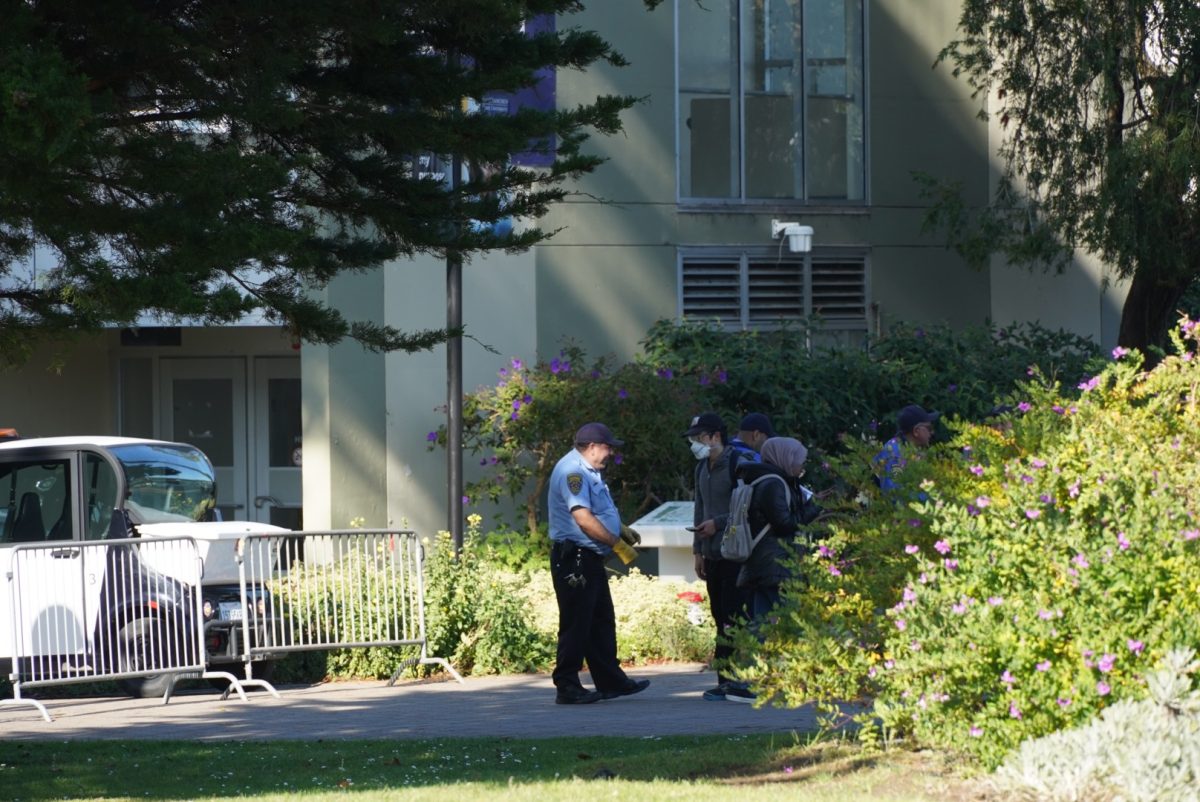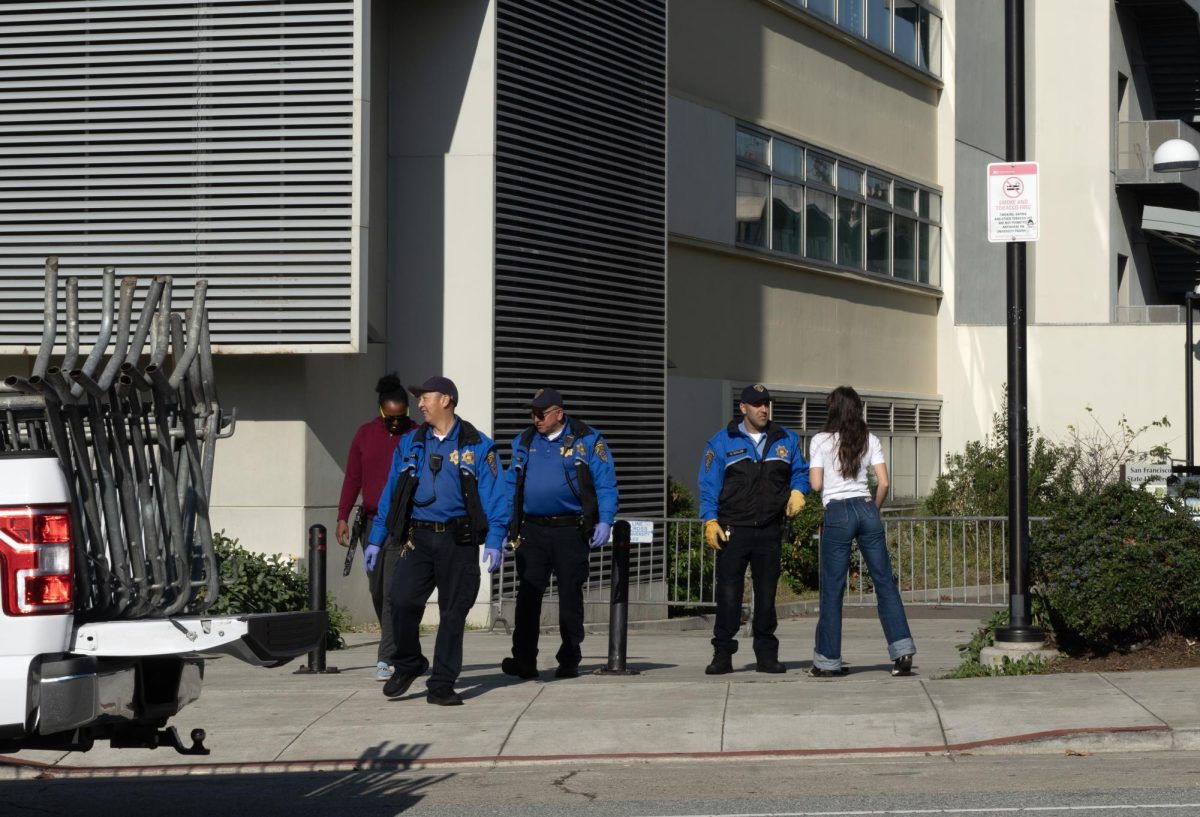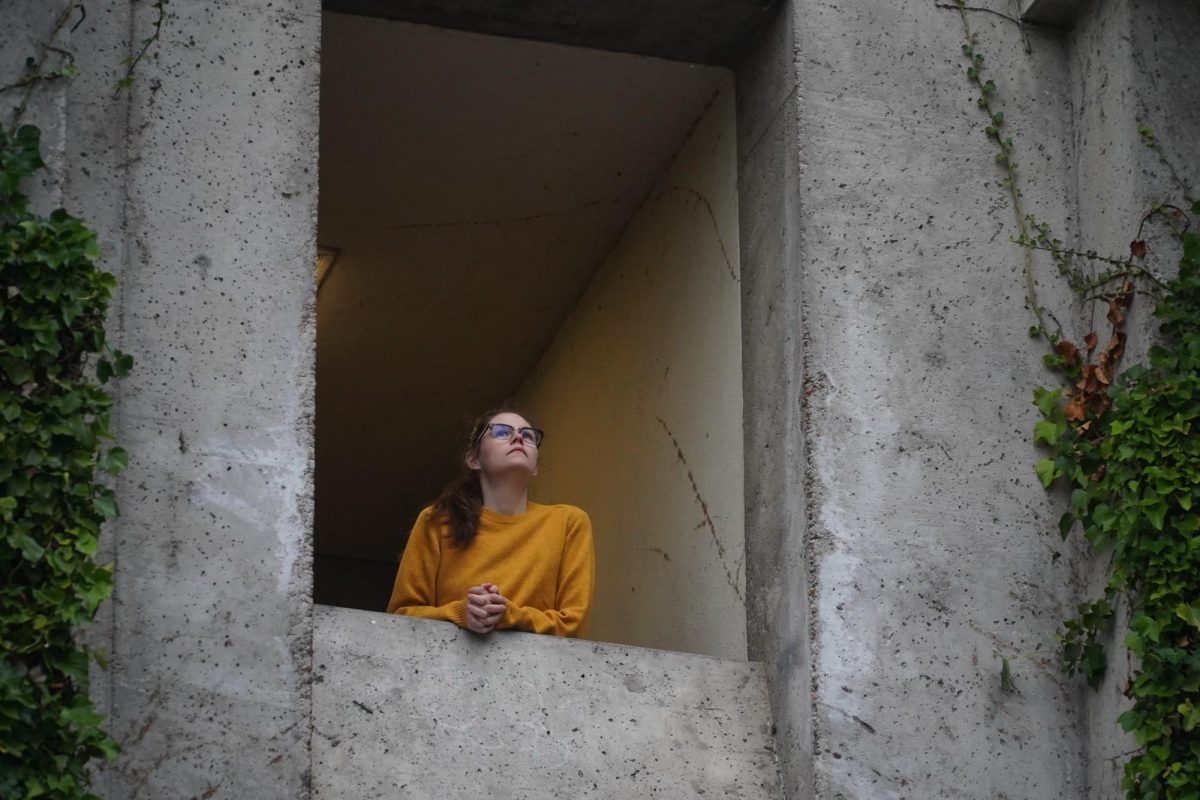As students gathered on Nov. 7 in Jack Adams Hall of the Cesar Chavez Student Center to celebrate the 12th anniversary of the inauguration of the Edward Said mural at SF State, a portion of the room was lit in green and red to emulate the colors of the Palestinian flag.

The podium on stage was draped with the Palestinian flag and tables were candlelit. Each table was home to a centerpiece with a key and name of a village that has been destroyed since the 1948 war, known to Palestinian’s as “Nabka” or “catastrophe.” It is also known as the Israeli war for independence. The keys in the centerpiece — a symbol excluded from the mural — symbolized the continued efforts of Palestinians to return to their homeland.
“Said always spoke up for Palestine he wrote alot about what it means to be Palestinian and what it means to be told that you dont exist constantly, while you obviously do exist,” said Noel Madbak, GUPS member. “It made sense for him to be the center of the mural.
Said was a notable Palestinian author and poet who is credited with creating academic studies of post-colonialism and is best known for writing “Orientalism” in 1978, which was a critique of the way Western nations perceive the Orient. The mural was unveiled at SF State in 2007. It is the only Palestinian mural on a college campus in the nation, according to Madbak.
The celebration was organized by the General Union of Palestine Students (GUPS). Live Palestinian music filled the room while guests found their seats. Members of GUPS wore traditional Palestinian tatreez thobes. Some attendees wore a keffiyeh around their necks, a Palestinian scarf that has become a symbol of resistance.
Spekarers mentioned how the administration denied Palestinian resistance symbols from the original mural mockup. Symbols like Handala, a cartoon character created by Palestinian artist Naji al-Ali, was excluded from the mural. Handala was drawn in torn clothes facing away from the audience. Handala represents a 10-year-old refugee to remain that age until Palestine is liberated and he is allowed to return home, said Al-Ali said when he created the character.
The theme of this year’s celebration was “We Will Return,” referring to the Great March of Return Movement which began March 2018 when President Trump declared Jerusalem as Israel’s capital, moving the US embassy there in the process. The movement is composed of a weekly march at the wall separating Gaza from the rest of historical Palestine.
A panel featured SF State lecturer Jamal Dajani, and former GUPS presidents Charlie and Ramsey El Qare. Dajani won a Peabody award for journalism and co-created Mosaic: World News and Arab Talk Radio. Panelists were interviewed by GUPS members about the right to return, resistance symbols and the recognition of Jerusalem as Israel’s capital.
“Palestinian refugees have an inalienable right to return to their homeland,” said Dajani during the panel. “Jerusalem is under attack on a daily basis. If you attack a body what do you do to kill someone? You stab them in the heart, and Jerusalem is our heart.”
Throughout the night, the fight to return home was intertwined with the fight for the mural. Ramsey el-Qare was GUPS president in 2005. He was the first to propose the mural at a Student Center Governing Board meeting, he remembers SCGB administrators at the meeting trying to stop its creation.
“At that meeting, their main concern was to stop the mural,” el-Qare said. “They wanted to stop the process and rewrite it so we weren’t able to get representation on this campus.”
The mural allows non-Palestinian students to put an image to Palestinian culture, el-Qare said. The mural features dabke dancers in Malcolm X Plaza, the Golden Gate Bridge and poetry dedicated to Edward Said.
After the panel Palestinian students read poetry on stage. Summer Hamideh was the first student to read her poem called “What It’s Like to Check White.” This poem explored the lack of choice for white passing Palestinian’s, on surveys and forms that ask for race or ethnicity.
Poetry transitioned into other live Palestinian performances. Samira Kharoubi, a vocalist who attended the Edward Said Conservatory of Music, played with Hashem Abdel-Hadi, a Palestinian oud player from Amman, Jordan. Sitting guests stood to clap and dance along with the music.
Attendees performed dabke, a Levantine folk dance. The dabke is performed in groups at celebratory events. Both Palestinians and non-Palestinians held hands and circumnavigated Jack Adams Hall with smiles and laughter. For many, this was their first time doing dabke.
Ahmad Merhebi performed dabke at the celebration and has been doing the dance since he was born in Lebanon. He said that performing the dabke at a Palestinian celebration felt right.
GUPS students continued to dance even when most of the guests moved on. They formed a circle around the Palestinian flag and celebrated their culture through dancing until the event ended.
“Dabke has always been a big part of my childhood,” Madbak said. “Being able to share that with people who aren’t Palestinian — friends, classmates and teachers — all of them being able to participate in that with us is powerful and it means a lot to us.”






